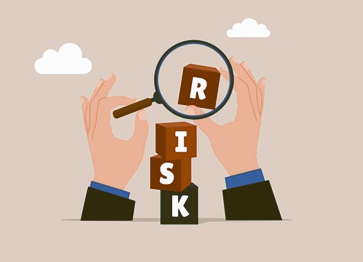In today’s dynamic business environment, managing business risks and uncertainties is crucial for long-term success. Companies face a myriad of challenges, from economic fluctuations to cyber threats, making a robust risk management strategy indispensable.
Identifying Business Risks
The first step in managing risks is identifying potential threats. These can be internal, such as operational inefficiencies, or external, like market volatility and regulatory changes. Conducting a thorough risk assessment helps in pinpointing vulnerabilities that could impact business operations.
Risk Assessment and Analysis
Once risks are identified, the next step is to assess their likelihood and potential impact. This involves quantitative and qualitative analysis to prioritize risks based on their severity. Tools like SWOT analysis (Strengths, Weaknesses, Opportunities, Threats) and PEST analysis (Political, Economic, Social, Technological) are useful for this purpose.
Developing a Risk Management Plan
A comprehensive risk management plan outlines strategies to mitigate identified risks. This plan should include preventive measures, such as diversifying supply chains to reduce dependency on a single supplier, and contingency plans for unexpected disruptions. Regularly updating this plan ensures it remains effective against emerging threats.
Implementing Risk Mitigation Strategies
Effective implementation of risk mitigation strategies requires clear communication and coordination across the organization. Training employees on risk awareness and response protocols is essential. Additionally, investing in technology, such as cybersecurity tools and data analytics, can enhance the ability to detect and respond to risks promptly.
Monitoring and Reviewing Risks
Risk management is an ongoing process. Continuous monitoring and reviewing of risks help in adapting to new challenges. Regular audits and risk reviews ensure that the risk management strategies remain aligned with the business objectives and the changing environment.
Embracing Uncertainty with Agility
While risks can be managed, uncertainties require a different approach. Businesses must cultivate agility to respond swiftly to unforeseen changes. This involves fostering a culture of innovation and flexibility, enabling the company to pivot and adapt to new circumstances effectively.
Managing business risks and uncertainties is integral to achieving stability and growth. By identifying risks, developing a comprehensive risk management plan, and fostering agility, businesses can navigate uncertainties and safeguard their future. Implementing these strategies ensures resilience in the face of challenges, securing a competitive edge in an ever-evolving market.
Who we are: Funded.com is a platform that is A+ BBB accredited over 10+ years. Access our network of Angel Investors, Venture Capital or Lenders. Let us professionally write your Business Plan.


